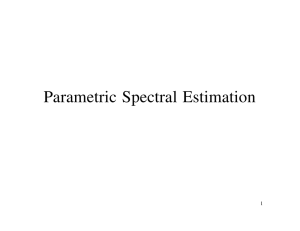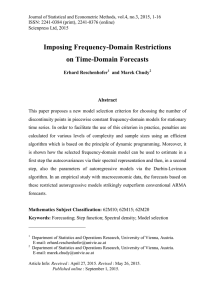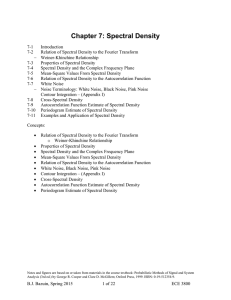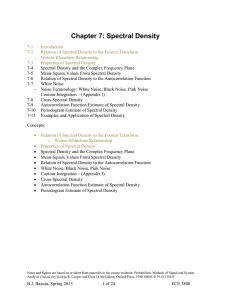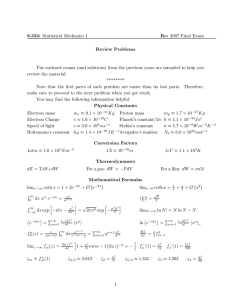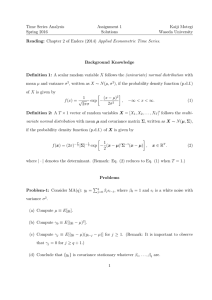4. Spectral Estimation from ARMA ... Suppose that one has determined the ARMA form (3.6). ...
advertisement
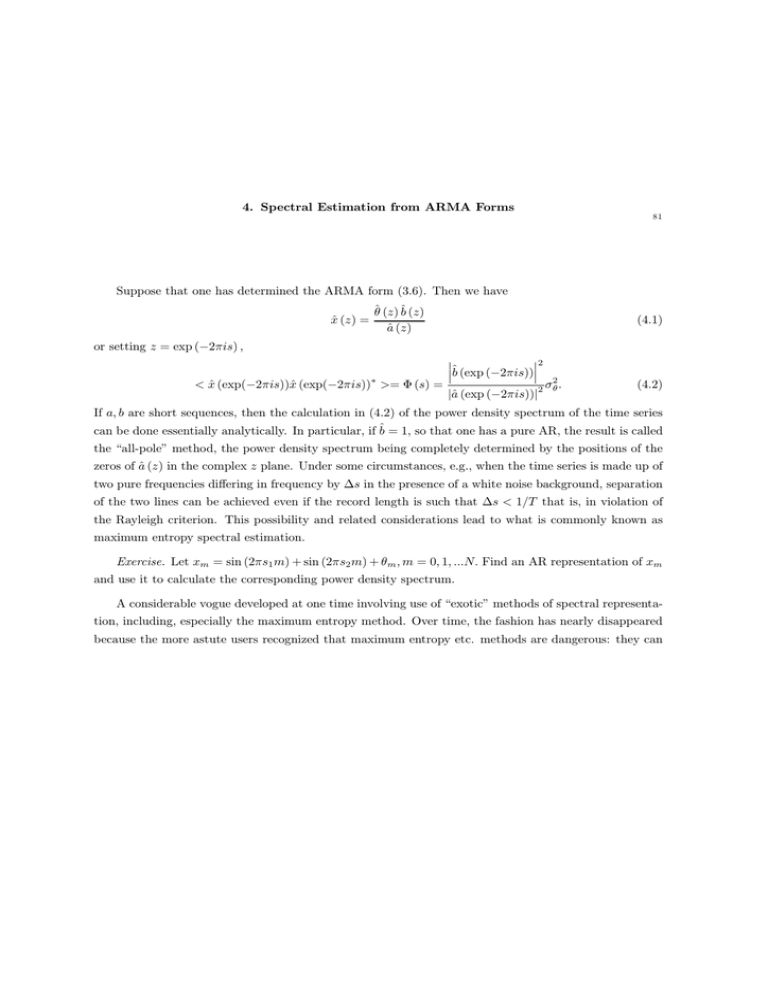
4. Spectral Estimation from ARMA Forms
81
Suppose that one has determined the ARMA form (3.6). Then we have
{
ˆ (}) =
ˆ (}) ê (})
d̂ (})
or setting } = exp (2lv) >
?{
ˆ (exp(2lv))ˆ
{ (exp(2lv)) A= (v) =
(4.1)
¯
¯2
¯ˆ
¯
¯e (exp (2lv))¯
|ˆ
d (exp (2lv))|2
2 =
(4.2)
If d> e are short sequences, then the calculation in (4=2) of the power density spectrum of the time series
can be done essentially analytically. In particular, if ê = 1, so that one has a pure AR, the result is called
the “all-pole” method, the power density spectrum being completely determined by the positions of the
zeros of d̂ (}) in the complex } plane. Under some circumstances, e.g., when the time series is made up of
two pure frequencies diering in frequency by v in the presence of a white noise background, separation
of the two lines can be achieved even if the record length is such that v ? 1@W that is, in violation of
the Rayleigh criterion. This possibility and related considerations lead to what is commonly known as
maximum entropy spectral estimation.
Exercise. Let {p = sin (2v1 p) + sin (2v2 p) + p > p = 0> 1> ===Q= Find an AR representation of {p
and use it to calculate the corresponding power density spectrum.
A considerable vogue developed at one time involving use of “exotic” methods of spectral representation, including, especially the maximum entropy method. Over time, the fashion has nearly disappeared
because the more astute users recognized that maximum entropy etc. methods are dangerous: they can
82
2. T IM E D O M A IN M E T H O D S
give seemingly precise and powerful results apparently unavailable in the Fourier methods. But these
results are powerful precisely because they rely upon the accuracy of the AR or ARMA etc. model. The
sensitivity of e.g., (4=2) to the zero positions in d̂ (}) means that if the pure pole representation is not the
correct one, the appearance of spectral peaks may be spurious. The exotic methods began to fade with
the realization that many apparent peaks in spectra were the result of an incorrect model. Tukey (1984)
and others, have characterized ARMA-based methods as “covert”, meaning that they hide a whole series
of assumptions, and recommend reliance instead on the “overt” or non-parametric Fourier methods which
are robust and hide nothing. This is good advice except for individuals who know exactly what they are
doing. (Percival and Walden discuss these various methods at length.)



